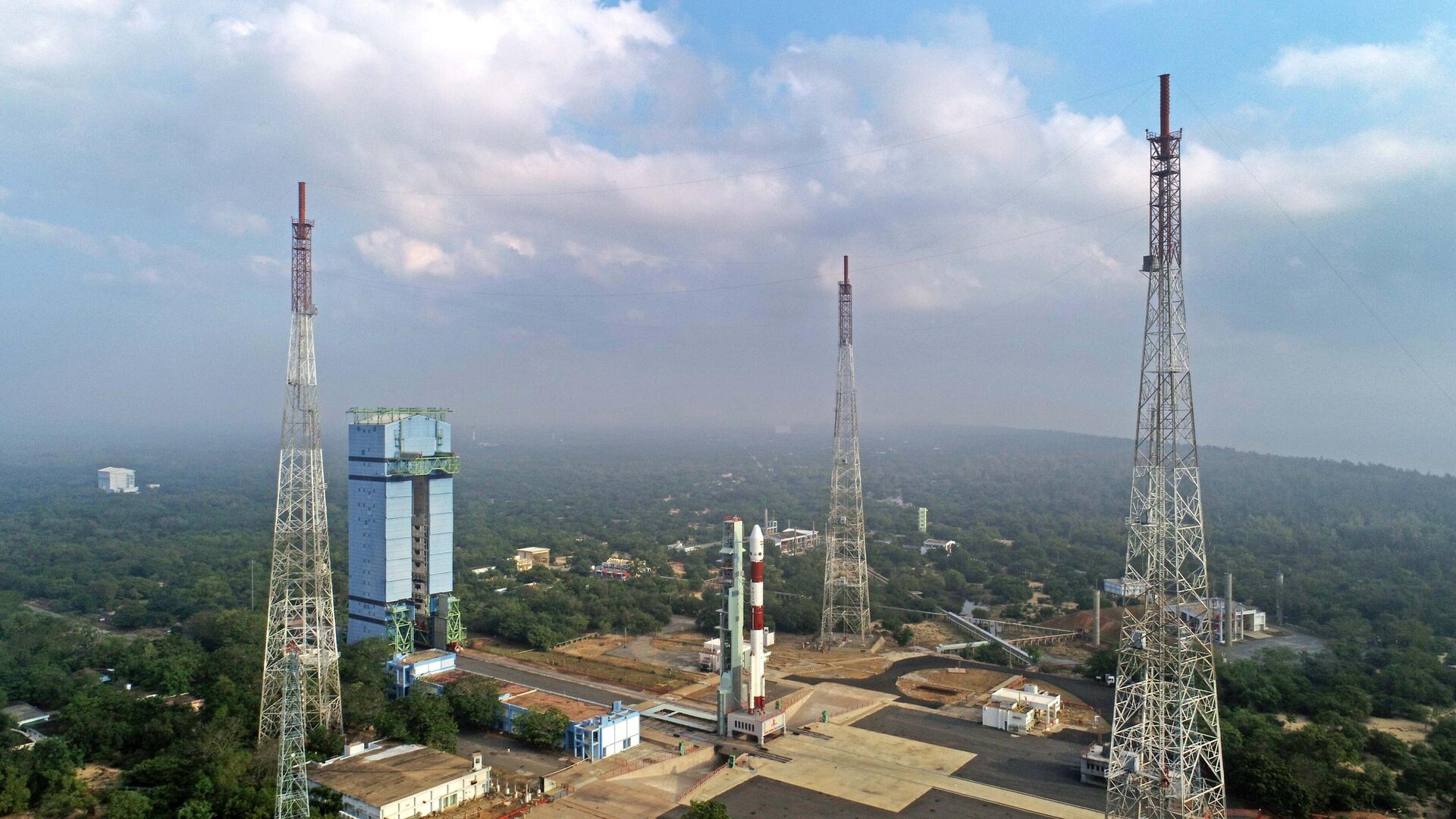https://sputniknews.in/20240101/isro-xposat-india-launches-polarimetry-satellite-to-unravel-black-hole-mystery-6045681.html
ISRO XPoSat: India Launches Polarimetry Satellite to Unravel Black Hole Mystery
ISRO XPoSat: India Launches Polarimetry Satellite to Unravel Black Hole Mystery
Sputnik India
On New Year's Day, the Indian Space Research Organisation (ISRO) launched its X-ray Polarimeter (XPoSat) at 9:10 am from the Satish Dhawan Space Centre in Sriharikota, Andhra Pradesh.
2024-01-01T15:20+0530
2024-01-01T15:20+0530
2024-01-01T15:20+0530
science & tech
science & tech
india
indian space research organisation (isro)
andhra pradesh
nasa
x (former twitter)
polar satellite launch vehicle (pslv)
space satellite
space industry
https://cdn1.img.sputniknews.in/img/07e7/0c/1f/6042506_0:0:3640:2048_1920x0_80_0_0_62b135de7b85b002f7f1d237688cd504.jpg
The ISRO on Monday launched its first X-ray Polarimeter Satellite (XpoSat), a space-based observatory to study X-ray polarisation and its cosmic sources — celestial bodies such as black holes, neutron stars, and magnetars.At 9.32 am (IST), the ISRO announced that the lift-off of the Polar Satellite Launch Vehicle (PSLV) was normal, and XPoSAT was launched successfully.XPoSat carries two payloads -- POLIX (Polarimeter Instrument in X-rays) and XSPECT (X-ray Spectroscopy and Timing). It will carry out long-term spectral and temporal studies of cosmic X-ray sources. It will also carry out polarisation and spectroscopic measurements of X-ray emissions from cosmic sources with the POLIX and XSPECT payloads.ISRO chief S Somanath announced the successful launch. POEM refers to the PSLV Orbital Experimental Module.India XPoSat Vs. NASA's IXPE: Which Is BetterWith this launch, India became the second nation after the United States (in 2021) to send a specialised astronomy observatory to study black holes and neutron stars. India's XPoSat's cost ($30 million) is six times less than NASA's IXPE ($188 million), and XPoSat is expected to last for five years. However, IXPE's scheduled mission life is only two years.
https://sputniknews.in/20231229/isro-to-launch-50-geospatial-satellites-over-five-years-6011661.html
india
andhra pradesh
Sputnik India
feedback.hindi@sputniknews.com
+74956456601
MIA „Rossiya Segodnya“
2024
Deexa Khanduri
https://cdn1.img.sputniknews.in/img/07e6/0c/13/138923_52:0:533:481_100x100_80_0_0_cadf23d341691fc65ff2b22fd1afe584.jpg
Deexa Khanduri
https://cdn1.img.sputniknews.in/img/07e6/0c/13/138923_52:0:533:481_100x100_80_0_0_cadf23d341691fc65ff2b22fd1afe584.jpg
News
en_IN
Sputnik India
feedback.hindi@sputniknews.com
+74956456601
MIA „Rossiya Segodnya“
Sputnik India
feedback.hindi@sputniknews.com
+74956456601
MIA „Rossiya Segodnya“
Deexa Khanduri
https://cdn1.img.sputniknews.in/img/07e6/0c/13/138923_52:0:533:481_100x100_80_0_0_cadf23d341691fc65ff2b22fd1afe584.jpg
x-ray polarimeter satellite, xposat, space mission, polarisation of light, polarimetry tool, astronomers, celestial objects, comets, chandrayaan 3 lunar mission, aditya l1, indian space research organisation, isro, astronomy, environments, s somanath, indian national space academy, emissions, black holes, neutron stars, active galactic nuclei, pulsar wind nebulae, chemical makeup, spectroscope, payloads, polarimeter instrument in x-rays, polix, x-ray spectroscopy and timing, xspect, full form
x-ray polarimeter satellite, xposat, space mission, polarisation of light, polarimetry tool, astronomers, celestial objects, comets, chandrayaan 3 lunar mission, aditya l1, indian space research organisation, isro, astronomy, environments, s somanath, indian national space academy, emissions, black holes, neutron stars, active galactic nuclei, pulsar wind nebulae, chemical makeup, spectroscope, payloads, polarimeter instrument in x-rays, polix, x-ray spectroscopy and timing, xspect, full form
ISRO XPoSat: India Launches Polarimetry Satellite to Unravel Black Hole Mystery
Deexa Khanduri
Sputnik correspondent
On New Year's Day, the Indian Space Research Organisation (ISRO) launched its X-ray Polarimeter (XPoSat) at 9:10 am from the Satish Dhawan Space Centre in Sriharikota, Andhra Pradesh.
The ISRO on Monday launched its
first X-ray Polarimeter Satellite (XpoSat), a space-based observatory to study X-ray polarisation and its
cosmic sources — celestial bodies such as
black holes, neutron stars, and magnetars.
At 9.32 am (IST), the ISRO announced that the lift-off of the Polar Satellite Launch Vehicle (PSLV) was normal, and XPoSAT was launched successfully.
"PSLV-C58 vehicle placed the satellite precisely into the intended orbit of 650 km with 6-degree inclination. The POEM-3 is being scripted", ISRO posted in X (earlier known as Twitter).
XPoSat carries two payloads -- POLIX (Polarimeter Instrument in X-rays) and XSPECT (X-ray Spectroscopy and Timing). It will carry out
long-term spectral and temporal studies of cosmic X-ray sources. It will also carry out polarisation and spectroscopic measurements of X-ray emissions from cosmic sources with the
POLIX and XSPECT payloads.ISRO chief S Somanath announced the successful launch. POEM refers to the PSLV Orbital Experimental Module.
"Only in 12 months (in 2024), we have to have a minimum of 12 missions on our target. It may exceed depending upon our ability to produce hardware and complete the testings. If it is not going to go well, there could be an impact. Otherwise, we are getting ready for at least 12-14 missions", Somanath said while speaking with media.
India XPoSat Vs. NASA's IXPE: Which Is Better
With this launch, India became the second nation after the United States (in 2021) to send a specialised astronomy observatory to study black holes and neutron stars.
India's XPoSat's cost ($30 million) is
six times less than NASA's IXPE ($188 million), and XPoSat is
expected to last for five years. However, IXPE's scheduled mission life is only two years.



